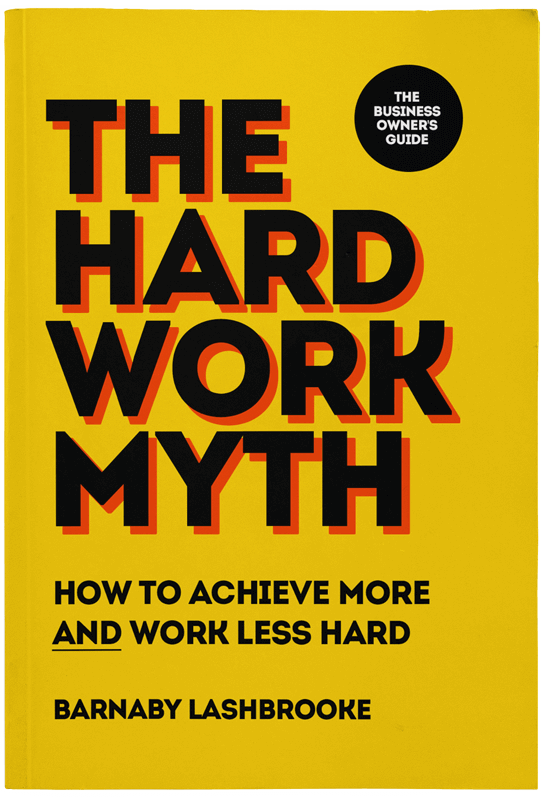That meetings are a necessary part of doing business is no secret. It's the reason a staggering 11 million meetings are held daily in the U.S. alone. Meetings can be a great way to communicate, collaborate and get work done.
However, they can also be an enormous waste of time if not managed properly. In fact, 71% of all meetings organizations hold are unproductive, translating to losses amounting to $37 billion.
But what makes most business meetings ineffective and detrimental to productivity? How can you gain more control over meetings and make them as efficient and productive as possible, whether you're meeting your virtual assistant online or gathering your team in person?
This guide explores the answers to these questions.
Why meetings can be detrimental to productivity
It's difficult to imagine something as fundamental as meetings being bad for productivity. But with most meetings failing to achieve intended results 70% of the time, it's wise to take a hard look at why they don't always serve their purpose.
Here are some common reasons why meetings can be detrimental to productivity:
Meetings tend to take up too much time
Each year, ineffective meetings lead to 24 billion hours of lost worker productivity. Every time meetings are scheduled, it takes away from the time that could be used to work on projects or tasks. Late arrivals, off-topic discussions, and lack of focus only add to the hours wasted.
Not only that but when multiple people are involved in a meeting, it can often take longer than expected to reach a consensus or come to an agreement. This can lead to meetings running over their allotted time and taking away from the productivity of other tasks.
Meetings can sometimes lead to misunderstandings
Questions, comments, and decisions made during a meeting can be subject to misinterpretation. This can lead to confusion and delays due to having to backtrack or reiterate instructions.
And even when everyone is on the same page, misunderstandings can still occur due to differences in communication styles. For example, some people may prefer to communicate in a direct and straightforward manner, while others prefer a more nuanced approach.
Meetings can lead to employees feeling unheard
When meetings aren't structured effectively, it can lead to a few people monopolizing the conversation while others are left unheard. This can undermine other employees' morale and makes them feel like their opinion isn't valued or respected.
This can result in employees disengaging during meetings and not contributing their ideas or solutions. Some employees might even start to dread attending company meetings because they know their voices won't be heard.
Meetings can encourage groupthink
When everyone in a meeting agrees without challenging each other, it can lead to less-than-ideal decisions being made. When people are too agreeable in a meeting, they tend to fall into a pattern of groupthink, which is not conducive to making sound decisions.
Groupthink tends to occur when people don’t want to rock the boat, so they don’t express their true opinions or ideas. This can lead to poor-quality decisions being made, which can negatively affect productivity.
Follow-up meetings are often needed, eating up more time
It's common for meetings to lack clear and concise objectives or outcomes. Without a clear meeting agenda, it can be difficult to reach an agreement or gain a consensus within the allotted time frame.
This often results in follow-up meetings being needed, which is just another drain on productivity. It's no wonder the average employee attends at least eight meetings a week.
Meetings can lead to analysis paralysis
While the main purpose of a meeting is to come to an agreement or make decisions, sometimes it's the opposite that happens. When there are too many opinions and ideas expressed during a meeting, it can cause analysis paralysis, where no one agrees on anything. This means that meetings end up going in circles with no progress being made.
How to cut down on unnecessary meetings and make those necessary meetings more effective
Sure, most meetings result in time wastage and little progress, but that doesn't mean you have to do away with them altogether. What you need to do is make sure that the meetings you have are productive and efficient.
Here are some tips to help you do just that:
Schedule meetings more effectively
The first step to holding productive meetings is scheduling them correctly. Aim to only schedule a meeting when it's absolutely necessary, and make sure that all parties invited to the meeting understand what the specific purpose is.
Make sure you assign an agenda for the meeting before it takes place to give everyone a heads-up so they can come prepared and ready to discuss topics that are relevant.
If you've yet to nail the art of scheduling meetings and don't have the time or inclination to master it, you can always hire VAs (virtual assistants) to help you out. A virtual PA can take care of all your scheduling needs, from managing your availability in your calendar to sending out each meeting invite and taking care of the minutes.
And, by outsourcing to a virtual assistant, you get to free up more valuable time for yourself to stay focused on the more impactful tasks that will help grow your company.
Cut back on attendee numbers
Having too many people in a meeting can lead to confusion, lack of focus, and long conversations that don’t lead anywhere. It’s also difficult for everyone to have their say when there are too many people in the conference room together.
To avoid this problem, it’s best to limit the number of participants to those who absolutely need to be there.
When deciding who should attend a meeting, ask yourself if each person has something valuable to contribute or needs to be present for the decision-making process. If not, you can always send updates to those who don’t need to be there. It's great to invite everyone if you have a large team, but too many people in one meeting can lead to chaos, confusion, and time wastage.
By limiting the number of participants in a meeting, you can ensure that it runs smoothly and efficiently while still achieving its goals. This will save time and energy for everyone involved and help make sure that your daily operations run as effectively as possible.
Assign roles for each meeting
Assigning roles is an effective way to ensure that all attendees are focused, organized, and productive. It helps encourage collaboration, prevent confusion, and give team members clear responsibilities.
When assigning roles for a meeting, first decide what tasks need to be completed during the meeting. This could include discussing key topics, gathering information, or creating actionable plans.
Next, assign a lead role for the discussion and other related roles, such as meeting facilitator or note-taker. This will make sure that one person is in charge of guiding the conversation and keeping track of important decisions or points of discussion.
In addition to assigning roles at the beginning of a meeting, it’s also important to review everyone’s roles at the end of the session. This will help ensure that everyone knows their responsibilities and can follow through on any action items assigned during the meeting.
By assigning roles for each meeting, managers can ensure that every participant has a defined purpose and stay on track to reach their goals. This can help improve efficiency in meetings and make sure that businesses are making progress toward their objectives without wasting time or resources.
Utilize technology
Technology can be a great way to maximize the efficiency of your meeting. You can use technologies like video conferencing and online collaboration tools to reduce travel time, eliminate excess paperwork and streamline communication.
In addition, using technological solutions such as virtual whiteboards or mind-mapping software can help organize ideas. This can help speed up decision-making and ensure that everyone is on the same page.
By leveraging the right technologies for effective meetings, you can make sure that your meetings are efficient, effective, and productive. This will help save time, reduce costs, and improve the overall success of your business down the line.
Keep track of time and stick to the agenda
Time is an important factor when it comes to meetings. To make sure that everyone stays on track, it’s essential to set a clear agenda and ensure that all meeting participants will follow it. This could mean limiting the amount of time spent on each topic or setting specific times for certain discussions.
To help make sure the meeting stays on track and doesn't run over its allotted time frame, consider setting a timer or using an online app to keep track of how long certain topics are discussed.
This also ensures that everyone gets a chance to speak and that all topics are discussed in an orderly and timely manner and that no one has to wait for their turn or feel rushed through their points.
It's also important to set expectations before the meeting begins. Let everyone know what will be discussed and how much time will be allocated for each topic. This will help keep everyone focused on the task at hand instead of getting sidetracked by other conversations or topics.
Encourage open communication
Encourage everyone to speak up and voice their opinions, even if they don’t agree with the majority of the group. This will help ensure that all perspectives are heard and considered when making decisions or forming plans.
When people communicate freely, it helps create an atmosphere of trust and collaboration. When everyone feels comfortable speaking up, they’ll be more likely to form strong relationships with their fellow team members and work together to achieve success.
To achieve open communication, create an environment where everyone can feel safe voicing their opinions without fear of judgment or criticism. Promote active listening and let people know that all ideas are welcome. Additionally, be sure to appoint enough time for everyone to have a chance to talk and be heard.
Encourage team members to give each other constructive feedback throughout the meeting. This will help everyone understand what’s working and what could be improved so that the team can reach their goals as effectively as possible.
Follow up and provide updates
After each meeting, follow up by writing an email summary that outlines the decisions made and tasks that need to be completed by each individual or team. This will help ensure that everyone is on the same page about what needs to be done in order for progress to be made.
Additionally, it serves as a reminder of what was discussed during the meeting, so that everyone can refer back to it if they need to refresh their memory on a particular topic or decision. This helps keep the team organized and productive, as well as provides accountability for each individual’s tasks and responsibilities.
And if you have a virtual assistant for your small business, you can assign them the task of drafting and sending out the summary emails after each meeting.
What's the bottom line?
Business meetings can be a valuable part of any organization’s strategy, but it’s important to ensure that they are efficient and productive. By following the tips outlined above, you can make sure that the meetings you attend and facilitate are effective and help your business reach its goals.







